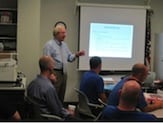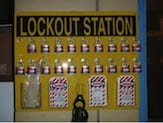The GHS is a system for standardizing and harmonizing the classification and labelling of chemicals. It is a logical and comprehensive approach to:
Author: skylineenv
Combustible Dust
Control of Combustible Dust “DOL/OSHA RIN: 1218-AC41 Publication ID: Spring 2013 Title: Combustible Dust OSHA has commenced rulemaking to develop a combustible dust standard for general industry. The U.S. Chemical Safety Board (CSB) completed a study of combustible dust hazards in late 2006, which identified 281 combustible dust incidents between 1980 and 2005 that killed Read More
Hazard Assessment – 29 CFR 1910.132
Personal Protective Equipment The OSHA/PEOSHA safety and health standards which regulate the use of Personal Protective Equipment (PPE) include: 1910.94, Ventilation; 1910.95, Occupational noise exposure; 1910.120, Hazardous waste operations and emergency response; 1910.132, General requirements (Personal protective equipment); 1910.133, Eye and face protection; 1910.134, Respiratory protection; 1910.135, Head protection; 1910.136, Foot protection; 1910.137, Electrical protective Read More
Bloodborne Pathogens – 29 CFR 1910.1030
Hepatitis B Vaccine Information The OHSA Bloodborne Pathogens Standard (29 CFR 1910.1030) states that Hepatitis B vaccination shall be made available after the employee has received the training required in paragraph 29 CFR 1910.1030(g)(2)(vii)(I) and within 10 working days of initial assignment to all employees who have occupational exposure unless the employee has previously received Read More
Major Requirements of Respirator Use – 29 CFR 1910.134
OSHA Office of Training and Education Rev. December 2006 This document discusses the major requirements of OSHA’s Respiratory Protection Standard, 29 CFR 1910.134. No attempt has been made to discuss every detail of the standard. Readers are encouraged to consult OSHA’s Respiratory Protection web page for the complete text. Introduction This standard applies to General Read More
Voluntary Use of Respirators – 29 CFR 1910.134
OSHA’s 29 CFR 1910.132 (d)(1) requires that employers perform a Personal Protective Equipment (PPE) assessment to determine whether hazards are present, or likely to be present, that necessitate the use of personal protective equipment. In addition, 29 CFR 1910.132 (d)(2) requires a written certification of the assessment. This Hazard Assessment can be used to decide Read More
linkimage4
content……….
Workplace Safety
and Health
Our goal is to provide comprehensive assistance to our clients in the management of their occupational safety and health needs.
PEOSH/OSHA
Compliance Assistance
Our goal is to provide comprehensive assistance to our clients in the management of their compliance with applicable federal and state regulations.
Environmental
Protection
Our goal is to provide comprehensive assistance to our clients in the management of their environmental needs.



